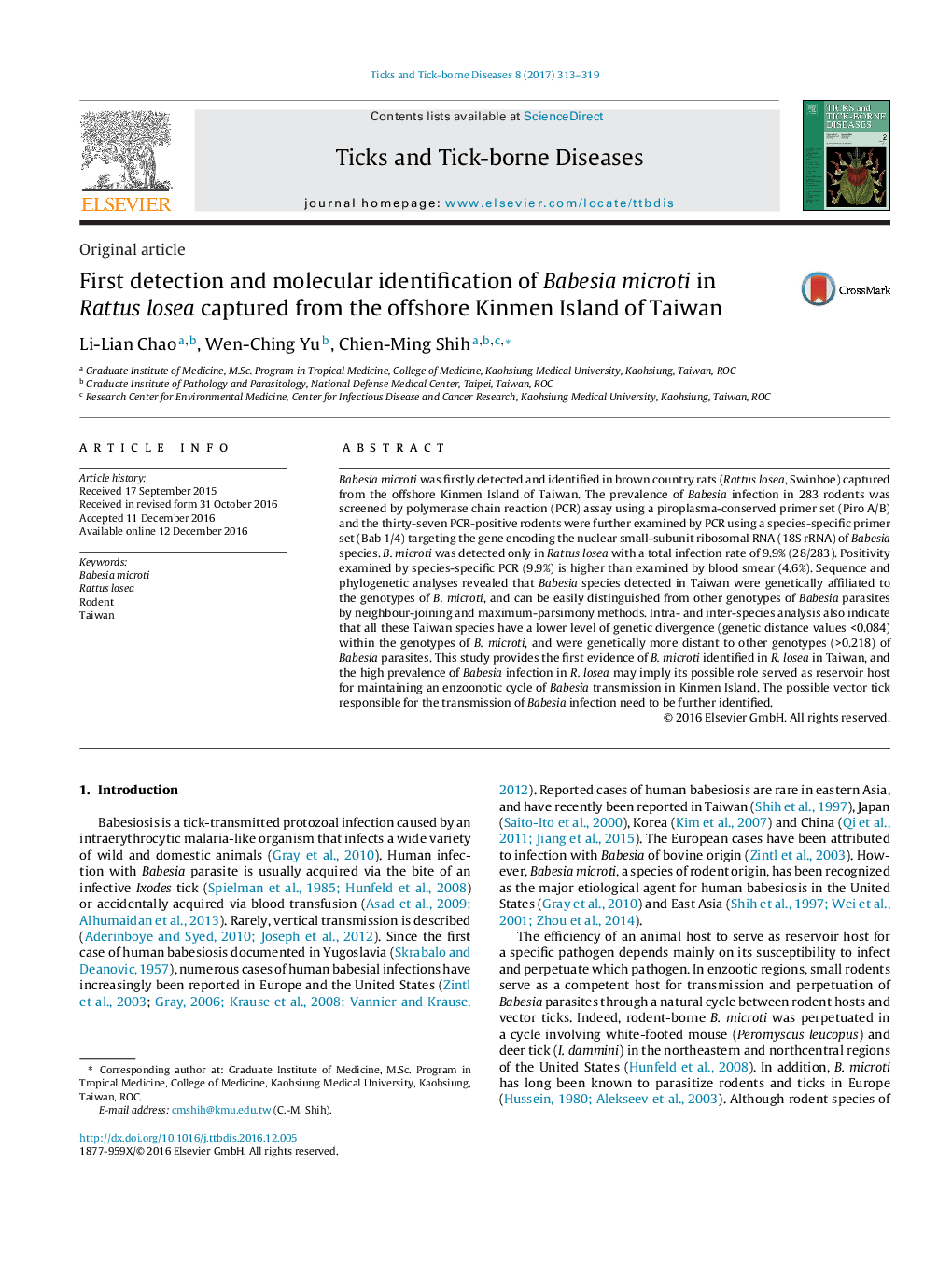| Article ID | Journal | Published Year | Pages | File Type |
|---|---|---|---|---|
| 5546485 | Ticks and Tick-borne Diseases | 2017 | 7 Pages |
Babesia microti was firstly detected and identified in brown country rats (Rattus losea, Swinhoe) captured from the offshore Kinmen Island of Taiwan. The prevalence of Babesia infection in 283 rodents was screened by polymerase chain reaction (PCR) assay using a piroplasma-conserved primer set (Piro A/B) and the thirty-seven PCR-positive rodents were further examined by PCR using a species-specific primer set (Bab 1/4) targeting the gene encoding the nuclear small-subunit ribosomal RNA (18S rRNA) of Babesia species. B. microti was detected only in Rattus losea with a total infection rate of 9.9% (28/283). Positivity examined by species-specific PCR (9.9%) is higher than examined by blood smear (4.6%). Sequence and phylogenetic analyses revealed that Babesia species detected in Taiwan were genetically affiliated to the genotypes of B. microti, and can be easily distinguished from other genotypes of Babesia parasites by neighbour-joining and maximum-parsimony methods. Intra- and inter-species analysis also indicate that all these Taiwan species have a lower level of genetic divergence (genetic distance values <0.084) within the genotypes of B. microti, and were genetically more distant to other genotypes (>0.218) of Babesia parasites. This study provides the first evidence of B. microti identified in R. losea in Taiwan, and the high prevalence of Babesia infection in R. losea may imply its possible role served as reservoir host for maintaining an enzoonotic cycle of Babesia transmission in Kinmen Island. The possible vector tick responsible for the transmission of Babesia infection need to be further identified.
